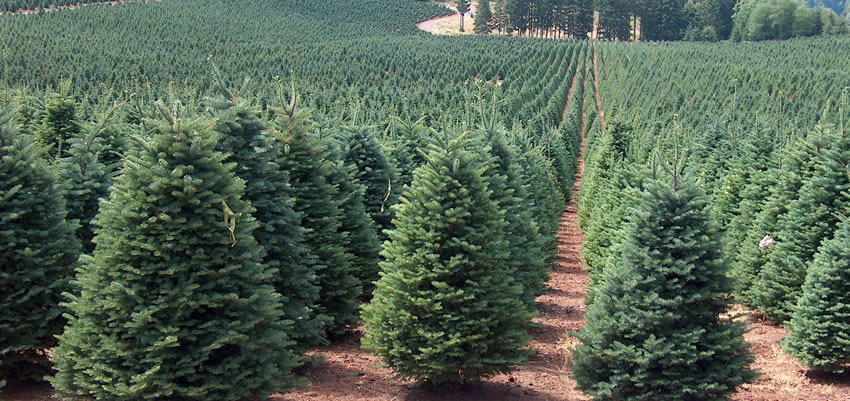Source: Eric Mortenson, Capital Press
Go ahead, Hawaii, open that container. We got you something really special this year, and a Christmas tree to go with it. That’s right, just what you’ve always wanted: Slugs and yellow jackets!
To spare the aloha state such holiday disappointment, two entomologists with the Oregon Department of Agriculture are headed to Hawaii to help with inspections of Christmas tree shipments. It’s important effort in what’s become a key market for Northwest trees.
Oregon growers lead the nation in Christmas tree production, and last year shipped 250 containers to Hawaii, each holding 400 to 700 trees. But 73 containers, nearly 30 percent of the total, had to be set aside and pumped with hot water to kill pests that had come along for the ride.
The culprits: Primarily slugs and yellow jackets, practically Oregon’s state insects.
Not that Hawaii doesn’t already have slugs and wasps, said Gary McAninch, manager of the ag department’s Christmas tree program.
“They just don’t want species they don’t already have there,” he said. “They don’t want to take a chance that it will become a bad pest on that side of the water.”
Helmuth Rogg, supervisor of the department’s insect pest management program, and fellow entomologist Jim LaBonte will travel to Hawaii this week to assist with inspections and to identify bugs found among the fir needles.
McAninch said Hawaii, which has a history of dealing with invasive species, is particularly strict in its agricultural inspections. Oregon Christmas tree growers who want to sell there or internationally must obtain a phytosanitary certificate from the state agriculture department. The certificate, attached to each container, declares the trees have been inspected by the department and are free of harmful pests and diseases.
Oregon requires licenses of anyone growing more than one acre of Christmas trees. The number of grower fluctuates with the economy; Oregon has about 600 licensed growers now, the peak was 750, McAninch said.
The state produces about 6.5 million trees annually, with about 90 percent of them leaving the state. California is the biggest domestic market, taking almost half the harvest. Mexico is the largest export market, receiving about 2,100 containers last year.
Growers have been cutting, baling and shipping trees for several weeks. Oregon tree shipments go to China, Japan and other countries in Asia and the Middle East, in addition to throughout the U.S.
- A Very New Pickathon in 2022 - August 13, 2022
- Pickathon returns to Pendarvis Farm! It’s not just the artists that’ll be new. - August 3, 2022
- July is BIPOC Mental Health Awareness Month (Black, Indigenous, Persons of Color) - July 14, 2022









Leave A Comment